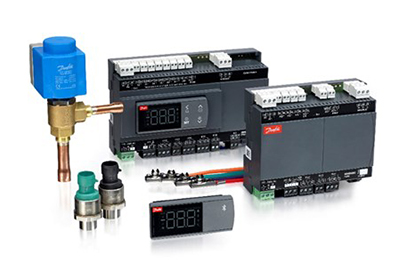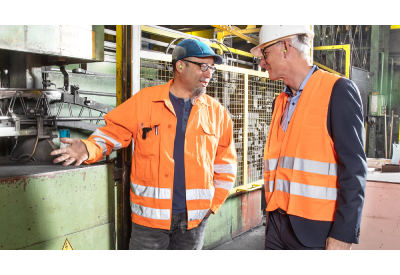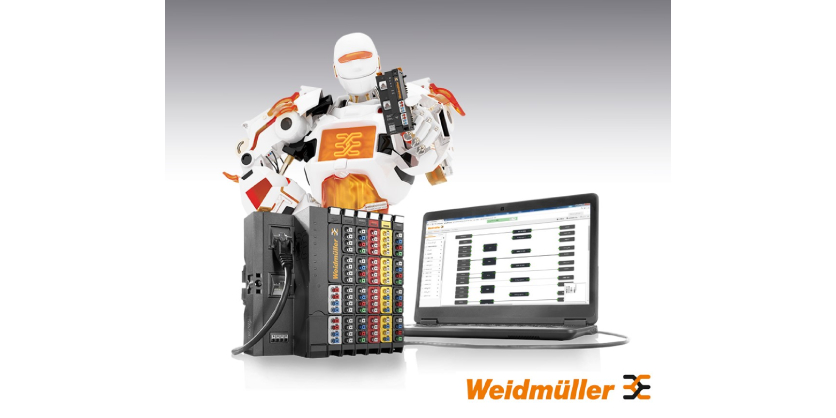Schneider Electric’s Environmental Data Program Rolls Out to Support Sustainability
May 20, 2025
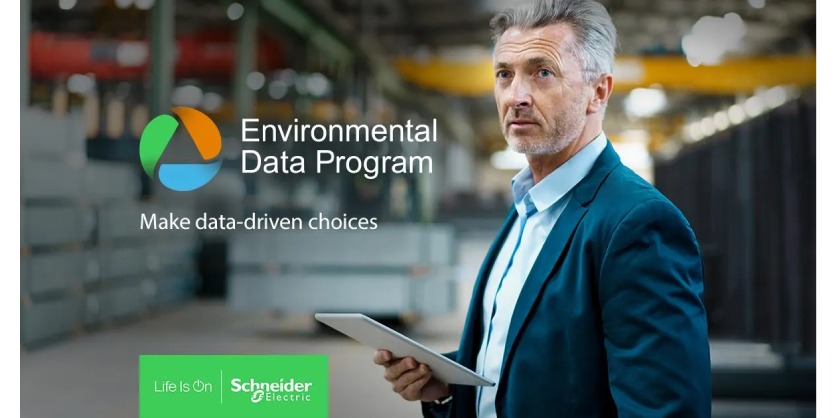
By Krystie Johnston
Schneider Electric is about creating impact by empowering all to make the most of our energy and resources. Their Environmental Data Program is building on this mission by providing transparency about the environmental footprint of their products across their entire lifecycle. Fourteen environmental attributes for 100,000 product references are currently available, offering a more comprehensive understanding of a product’s environmental impact. Schneider’s goal is to have this information available for 155,000 product references by the end of the year.
The Environmental Data Program plays a part in Schneider’s commitment to transparency by declaring the environmental characteristics of their products. A commitment that has evolved over the last two decades. Frederick Morecny, Vice President, Sustainability, Strategic Initiatives & Innovation at Schneider Electric says this commitment is about maintaining the trust that customers have put in them for generations. “We are part of an industry, the electrical industry, which has an obligation for disclosure. It has a lot of codes, standards, and compliance. It is important.”
Morency says that customers are increasingly demanding clarity about the environmental impact of the electrical components they purchase or specify. They want to know more about the attributes of these products, like their CO2 emissions and energy efficiency. “We see more and more of our customers demand this, and for us, it is part of our sustainability engagement overall to disclose this information.” He adds that it is also important his teams understand the environmental impacts and technical specifications of Schneider’s products to create proposals that incorporate this data.
Scheider’s journey towards the environmental transparency of their product has spanned decades. It started at the turn of the century when the European Union adopted RoHS and REACh directives which regulated certain hazardous substances and chemicals in electronics manufacturing, like lead and mercury to protect human health and the environment. As a global manufacturing company serving the electrical industry, it was a logical step to align with these mandates.
But more than just getting on the bandwagon, Schneider Electric genuinely put sustainability at the core of the company itself. Morency says that at this time, the CEO of Schneider Electric, Jean-Pascal Tricoire, infused his passion about using technology to make the most of our resources in the name of sustainability. And this passion guided Schneider in their development of their company strategy, their sensitivity to environmental impacts, and how they design and manufacture their electronic products.
“It has been a journey where we started to disclose the content of our products when it to the chemical content of our products. It evolved to environmental impacts, CO2 emissions, and so on. And we are expanding this even further now,” says Morency. Schneider’s Environmental Data Program is one more step on that journey towards environmental transparency. “We are familiar with providing certificates of compliance to every standard that would be required by our industry,” he says. “We embrace it. That is the name of the business, to make sure that we never lose the trust of our customers.”
Schneider’s Environmental Data Program builds upon their Green Premium label. A label provides transparent information on regulated substances and shared product environmental profiles and end-of-life instructions. It was a step in the right direction, but Schneider realized they could do more. “A big part of our emissions come from our product design, the supply chain of our products, up to the full lifecycle,” says Morency. “Our team realized that environmental impact is not only the emissions at the time of production. We need to look at the full lifecycle, from the design to its end,”
So, they created the EcoDesign Way. This is Schneider’s way of looking at the full impact that a product will have across its entire lifecycle. It is the circularity of the product – from the design to the manufacturing to the repairability, to its recyclability – and optimizing the efficiency and sustainability of each stage. And, by following the EU benchmarks, they are as good as they can be. “European standards or European directives towards environmental disclosures are certainly more advanced than what we see in North America,” says Morency. He adds that there are international alignments about conformity on the requirements for the environmental impact of these products right now.
The launch and roll out of Schneider’s Environmental Data Program is a giant step forward towards advancing product environmental data transparency. And customers are already seeing additional benefits besides energy efficient products that support sustainability. They are seeing an increasing competitive advantage. “When we design a project, we want to disclose these elements about the environmental impact the products have, so that our customers can look at Option A and Option B. And look at the data backing up these differences.”
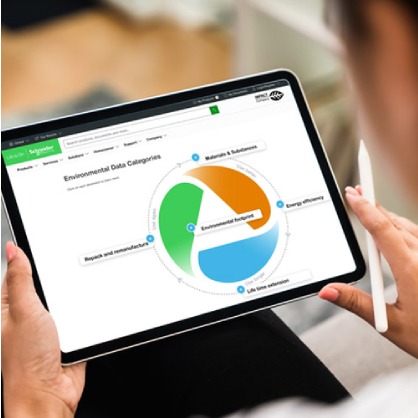
Looking at an example, last year Morency had a discussion with a Canadian company who was manufacturing machines that were sold around the world, an in particular, in Europe. “We sat down with that company, and we were able to explain how the product we are going to provide them will enable them to improve the overall value that they bring to their European customers, and their international customers as well,” says Morency. “Being able to disclose the overall environmental impact of their solution themselves, for the machine they were selling internationally, was another advantage.”
With Schneider’s Environmental Data Program, their partners gain a competitive advantage because of the environmental transparency that it provides on many of its electronic products. Many leverage it to differentiate themselves and create their own value proposition to their customers.
“Where we [Schneider] have seen a big change in the past years is that, as a company, we are often asked for in the pre-qualification,” says Morency. “The pre-qualification has basic company information, and health and safety. But what we have seen the big change in the last 12 to 18 months is the sustainability and environmental elements that are required to be disclosed.”
Having access to and transparency of these environmental attributes will be a game changer for future projects, especially as climate actions call for more efficient practices. It has been a deep transformation and has taken some time, but they are closer than ever to their goals. “It is taking some time, but now we are at the point that over 70% now are of our product and turnovers are already part of this disclosure, and we are aiming to reach 80% at the end of this year. That is the commitment of our current sustainability goals of our current plan. And at the end of the year, we will disclose the next steps of our ambitions and goals to bring us to 2030.”
Morency concludes that Schneider will support their partners with the roll out of their Environmental Data Program so that they can gain from the advantages that environmental product transparency can provide. Meaning that partners will be able to import this data into their marketplace, sales teams and proposal teams will have access to it, and there will be some tools made available to support the articulation of the environmental attributes of the products in this program.
About Frederick Morency

Frederick has been with Schneider Electric for over 25 years and is the quarterback for Sustainability in Canada, guiding net-zero actions across the company’s operations and value chain and supporting customers’ sustainability journey. In 2023, Frederick was named to The Globe & Mail’s Best Executives list for his leadership and expertise in the market.
He is a trusted advisor and has helped customers in over 40 countries decarbonize and efficiently manage their energy use. Prior to his role as the Sustainability lead for Schneider Electric, Frederick served as Vice President, Services, where he orchestrated strong digital experiences between Schneider Electric’s partners, customers and core businesses.
Frederick is a strong believer in the power of mentorship. Under his leadership, Schneider Electric has partnered with the Indigenous Clean Energy Social Enterprise (ICE) to help Indigenous communities build a clean energy plan. He also supports the next-generation of talent and academia through alliances with HEC Montreal and other research institutes and is involved with think tanks and start-ups who are mapping innovative ways to reach net-zero ambitions.
More Information
Are you looking for more information? Visit Schneider Electric today!
Related Story
Schneider Electric: Your Trusted Partner in Sustainability and Efficiency
Schneider Electric is on a mission to be the trusted partner in sustainability and efficiency. Since 1836, they have pioneered technological innovation to create a world where life is on. Frederick Morency, Vice President of Sustainability, Strategic Initiatives & Innovation at Schneider Electric Canada, has experienced this joie de vivre for the last 28 years. Here, he explains what his work involves, what sustainability is, and why it is at the heart of what Schneider Electric does as a company.


